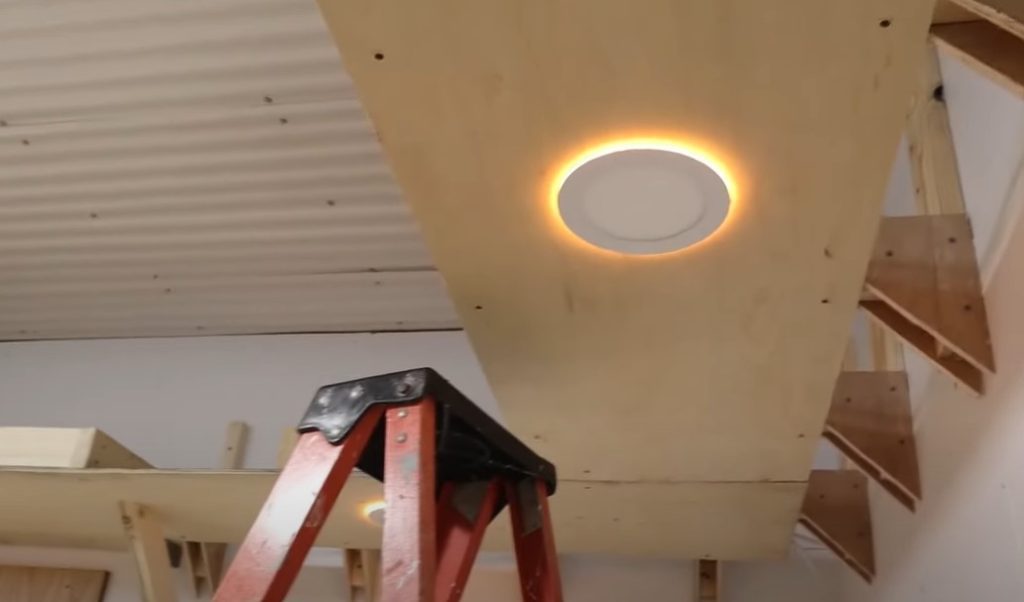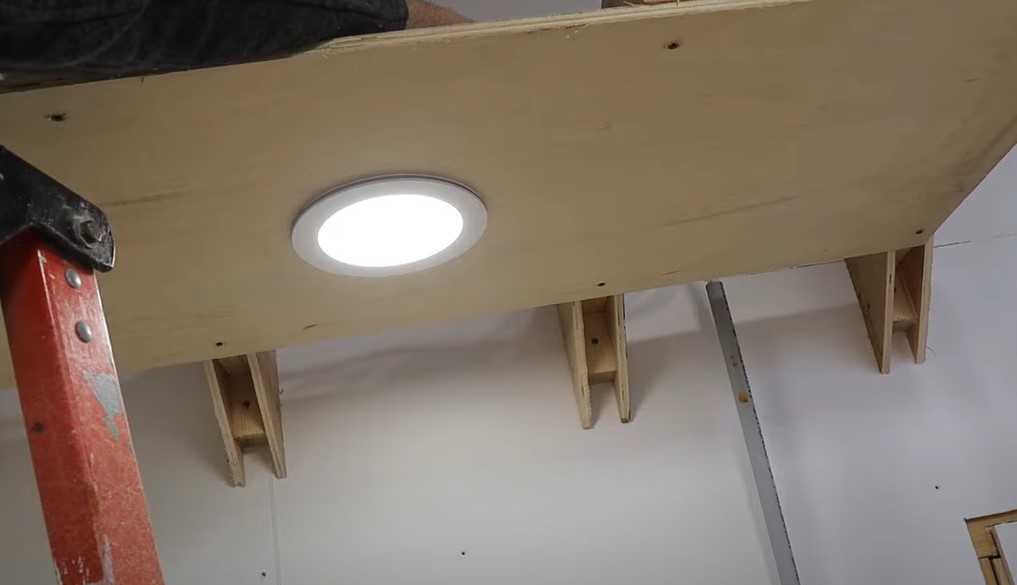LED Can Lights: Ideas, Guide, And More
Looking for energy-efficient and stylish lighting solutions for your home or business? This comprehensive guide dives deep into the world of LED can lights, explaining their features, benefits, installation, and much more. You’ll learn about different types, wattage, color temperatures, and how to choose the perfect LED can lights for your specific needs. We’ll also…
Looking for energy-efficient and stylish lighting solutions for your home or business? This comprehensive guide dives deep into the world of LED can lights, explaining their features, benefits, installation, and much more. You’ll learn about different types, wattage, color temperatures, and how to choose the perfect LED can lights for your specific needs. We’ll also cover troubleshooting and address frequently asked questions.
LED can lights, also known as recessed lights or downlights, are a popular choice for interior lighting. They are installed directly into the ceiling, providing a clean, sleek look. The “can” refers to the housing that’s recessed into the ceiling. Unlike traditional incandescent or halogen bulbs, LED can lights use light-emitting diodes, which are significantly more energy-efficient and long-lasting.
Brightness is measured in lumens. A higher lumen rating means a brighter light.
LED Can Lights Which You Have To Know

Consider the size of the room and the desired ambiance when choosing the lumen output. A small bathroom might only need 400 lumens, while a large living room might require 1500 lumens or more.
Color Temperature
Color temperature is measured in Kelvin (K). Lower Kelvin values (2700K-3000K) produce warmer, yellowish light, suitable for relaxing spaces like bedrooms. Higher Kelvin values (5000K-6500K) produce cooler, bluish light, ideal for kitchens or offices.
Color Rendering Index (CRI)
CRI indicates how accurately colors appear under the light source. A higher CRI (80 or above) provides more natural and vibrant color rendering.
Dimmability
Many LED can lights are dimmable, allowing you to adjust the brightness to suit your needs. Make sure to check compatibility with your dimmer switch.
Energy Efficiency
LEDs are significantly more energy-efficient than incandescent or halogen bulbs, saving you money on your energy bills.
Related content: Illuminating Your Home: A Comprehensive Guide To LED Ceiling Lighting
Types of LED Can Lights

Trim Styles
LED can lights come in various trim styles, including round, square, and even decorative options. The trim style complements your interior design.
Wattage and Equivalent Wattage
LED can lights are typically rated in watts (W). Pay attention to the equivalent wattage, which compares the brightness of the LED to a traditional incandescent bulb. For example, a 10W LED can light might be equivalent to a 60W incandescent bulb.
Voltage
Most LED can lights operate on standard 120V household voltage.
Benefits of Using LED Can Lights
LED can lights offer numerous benefits over traditional lighting options:
- Energy Efficiency: Significantly lower energy consumption.
- Longevity: Much longer lifespan than incandescent or halogen bulbs.
- Durability: Resistant to shocks and vibrations.
- Compact Design: Sleek and space-saving design.
- Versatile Applications: Suitable for various settings, from homes to commercial spaces.
- Dimmable Options: Control the brightness to match your preferences.
Limitations of LED Can Lights
While LED can lights offer many advantages, there are some drawbacks to consider:
- Initial Cost: LED can lights are generally more expensive upfront than traditional bulbs.
- Installation Complexity: Proper installation might require some electrical knowledge or professional help.
- Heat Sensitivity: While less heat is generated than with incandescent bulbs, overheating can still be a problem in enclosed spaces.
- Color Consistency: Slight variations in color temperature among different LED bulbs in a fixture can occur.
Related Article: LED Recessed Ceiling Lights: In-Depth Discussion & Guide
Installing LED Can Lights
Choosing the Right Location
Before installation, plan the placement of your LED can lights carefully. Consider the room’s size, layout, and intended use.
Wiring and Connections
Proper wiring is crucial for safety and functionality. If you’re not comfortable working with electricity, hire a qualified electrician.
Cutting the Ceiling
Use the appropriate tools to cut a hole in the ceiling for the can housing. Ensure the hole is the correct size for the housing.
Connecting the Wiring
Carefully connect the wires according to the manufacturer’s instructions.
Securing the Housing
Secure the housing firmly in place before installing the LED bulb and trim.
Related Article: Can You Cut LED Light Strips? A Comprehensive Guide
Comparing LED Can Lights with Other Lighting Options
Let’s compare LED can lights with other common lighting options:
| Feature | LED Can Lights | Incandescent | Halogen | Fluorescent |
|---|---|---|---|---|
| Energy Efficiency | High | Low | Medium | Medium |
| Lifespan | Long | Short | Medium | Medium |
| Cost | Medium-High | Low | Medium | Medium |
| Heat Output | Low | High | High | Medium |
Choosing the Right LED Can Light for Your Needs
Several factors influence the selection of LED can lights:
-
- Room Size and Layout: Determine the number of lights and their placement.
- Desired Brightness: Select the appropriate lumen output.
- Color Temperature: Choose a color temperature that suits the room’s ambiance.
- Budget: Consider your budget and the long-term cost savings.
- Style and Design: Select a trim style that complements your interior décor.
Troubleshooting Common LED Can Light Issues
Flickering Lights
Flickering can be due to loose connections, a faulty dimmer switch, or a problem with the LED bulb itself. Check all connections and replace the bulb if necessary.
Non-Functional Lights
If a light doesn’t turn on, check the circuit breaker and ensure the bulb is properly installed and functional.
Dimming Problems
If dimming doesn’t work correctly, ensure that the LED can lights are compatible with your dimmer switch. Some LEDs require specific dimmers for proper operation.
Maintenance and Care of LED Can Lights
LED can lights require minimal maintenance. Regularly inspect them for damage or loose connections. If a bulb burns out, replace it with an identical one to maintain color consistency. Avoid touching the bulb itself to prevent damage.
Frequently Asked Questions
What are LED can lights used for?
LED can lights are used for general illumination in residential and commercial spaces, providing versatile lighting solutions for various rooms and environments. Their applications include accent lighting, task lighting, and ambient lighting.
How long do LED can lights last?
LED can lights typically last for 25,000 to 50,000 hours or more, significantly longer than incandescent or halogen bulbs. Their extended lifespan reduces replacement costs and maintenance.
Are LED can lights dimmable?
Many LED can lights are dimmable; however, it’s crucial to check the specifications before purchasing, as not all models are compatible with dimmer switches. Using an incompatible dimmer can damage the bulbs.
How much energy do LED can lights save?
LED can lights use significantly less energy than traditional incandescent bulbs. An LED light might only use 10W to produce the same brightness as a 60W incandescent bulb. This translates into substantial energy savings over their lifespan.
How difficult are LED can lights to install?
The installation complexity varies. Basic LED can lights with simple connections are relatively straightforward, but more complex models or those requiring wiring modifications might need professional assistance.
What is the difference between warm white and cool white LED can lights?
The color temperature determines the warmth or coolness of the light. Warm white (2700K-3000K) is yellowish and ideal for relaxing environments, while cool white (5000K-6500K) is bluish and better suited for task-oriented areas.
Can I use LED can lights in a bathroom?
Yes, you can use LED can lights in bathrooms, but ensure they meet the appropriate safety requirements for damp or wet locations. Look for lights with an IP rating indicating their suitability for such environments.
Final Thoughts
LED can lights are a superior lighting solution offering significant energy savings, long lifespan, and versatility. While the initial cost might be higher than traditional lighting, the long-term benefits far outweigh the expense. By understanding the various features, types, and installation procedures, you can choose the perfect LED can lights to enhance your home or business. Whether you’re aiming for a warm and inviting ambiance in your living room or bright, efficient lighting in your kitchen, LED can lights provide an excellent, energy-conscious choice. Consider your specific lighting needs, budget, and aesthetic preferences to make an informed decision and illuminate your space beautifully. Remember to always follow safety guidelines during installation and contact a qualified electrician if you are unsure about any aspect of the process. So, take the plunge into energy-efficient lighting and enjoy the benefits of LED can lights today!

